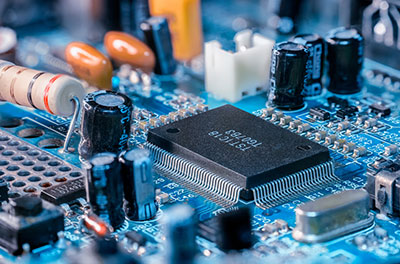A set of electronic components together make an electric circuit. The different parts pass the current, maintain the voltage and power the circuit. Failure of any element in an electrical circuit can stop it from working. However, every unique arrangement of components can give you a new course. Every electronic circuit serves a particular function. It can work as an amplifier, radio receiver, or oscillator.
What are the various types of electronic components? What are their functions? How do we form an electric circuit? How many electronic components do we need for a simple course? This article will cover everything that you need to know about electronic components.
Contents
About Electronic Components
A physical entity in an electronic system, electronic components make a circuit work. They affect the electrons or their associated fields for the system’s proper functioning. They are usually connected by placing them on a DOT PCB or soldering them on to a PCB. Putting the electronic components together fulfills a function of the circuit. A circuit can be an amplifier, oscillator, or radio receiver.
Typically individually packaged component. They also come in complex groups as integrated circuits. The most common types of electronic components are resistors, diodes, and transistors. TIn electrical processes, they are passive or active components.
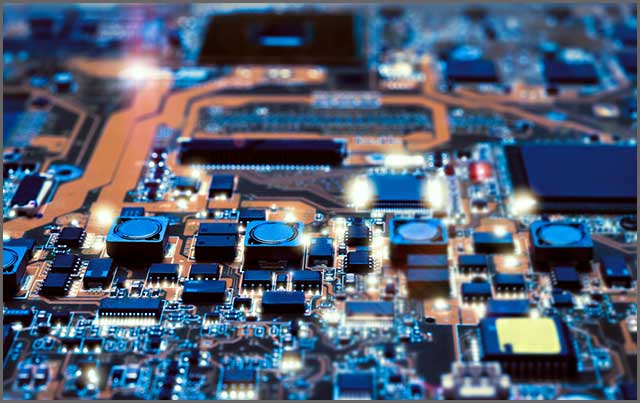
Active and Passive Electronic Components
The active components of the electronic circuit can supply energy for themselves. The passive components are the ones that are unable to do so. However, these definitions only concern the AC circuits as DC circuit functions differently.
• Active Components –. The active electronic components rely on an energy source in the system. They are usually capable of inducing power into the circuit. The amplifying components of the course, such as transistors, diodes, etc. are active.
• Passive Components – Passive components are unable to introduce energy into an electronic circuit. These components do not rely on a DC source of power like active components. They are driven only from their ability to AC circuit to which it belongs. Therefore, they can not amplify a signal. But they may increase the voltage or current in a resonant circuit. The two-terminal components, such as resistors, capacitors, inductors, and transformers, are passive components.
Types of Electronic Components
An electronic circuit can be as complicated as one wants and can include several components. However, specific electronic components are common to every course that we may construct. The following are the types of electronic components commonly found in every electronic circuit.
• Resistors
A resistor is one of the essential elements of an integrated circuit. The electronic component resists the flow of the current. The resistor’s grading is the power that it can handle without exploding. Another factor is its resistance value, which is its capacity to resist the current. It is a two-terminal passive electronic component. It works on the principle of Ohm’s law. The formula to calculate resistance is V=IR, where R is resistance. The unit of resistance is ohms.
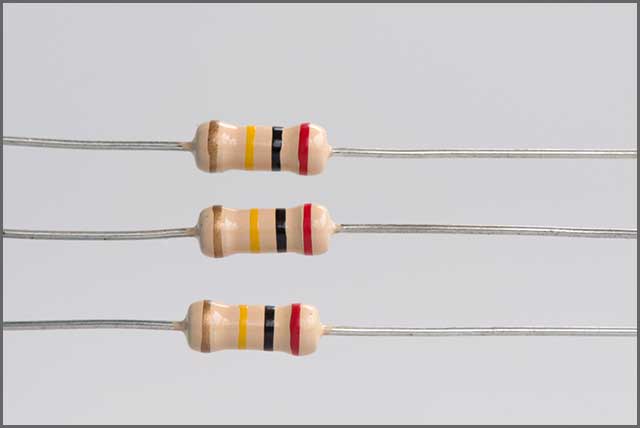
• Capacitors
A capacitor can store electric charge for a temporary period. It saves the electrical cost in the form of the electric field. A capacitor has an insulator between two conductive plates. It features different types of components, like an electrolytic and ceramic disk. It blocks the DC signals and allows the AC signal to pass through it.
You can also use a resistor with a capacitor in a timing circuit. The stored charge in a capacitor is Q=CV. Here, C is the capacitor’s capacitance, and V is the applied voltage. The unit is microfarads(µF).
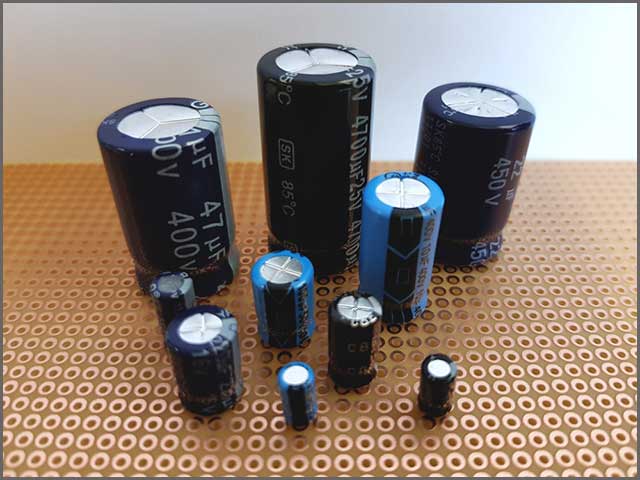
• Inductors
Inductors store energy in the form of a magnetic field. It is a passive component and resists the changes in the current. It consists of a coil of wire wound around a core. The core is usually magnet or air. The inductor creates a magnetic field around when current passes through it. If the heart is a magnet, the generated domain is stronger.
The inductance of the inductor is L= (µ.K.N2.S)/l. Here, L is the inductance of the inductor. The µ is Magnetic permeability, K is the magnetic coefficient, S is the area of the coil, n is the number of turns, and l is length. The unit of inductance is Henry.
• Diodes
A diode allows the electric current to pass through it. However, the current can only flow in one direction. A diode consists of an anode and cathode. The current can flow on charging an anode with positive voltage and cathode with a negative one. If you reverse these voltages, the current will not leak. Different types of diodes, typically made of semiconductor material.
• Transistors
Transistors are semiconductor devices with three terminals. They are mostly used as switching devices and also as amplifiers. You need to apply voltage on one of its terminals (base) to control the current flow in the other two. The other two terminals are emitter and collector. There are two types of transistors, namely, bipolar junction transistors and field-effect transistors.
• Integrated Circuits
An integrated circuit consists of all the devices that an electronic circuit needs. It has several transistors, resistors, diodes, and other electronic components.
A tiny silicon chip holds all of these components together. Electronic devices such as watches, cellphones, computers, etc. use integrated circuits. They can be analog or digital. Depending on their application, they are either linear or non-linear. Different types of integrated circuits are Op-amps, timers, switches, ICs, and so on.
Elements of Electronic Circuit
An electronic circuit can either be simple or complex based on its application. A simple electronic course includes three elements, conducting path, voltage source, and load.
• Leading Path
The electric current in an electronic circuit flows through the conducting way. Traditionally, copper wires make up the circuit. But conductive traces are replacing these wires. Conductive traces are copper sheets laminated onto a non-conductive substance. They are useful for small and complex courses like Printed Circuit Boards (PCB).
• Voltage Source
The purpose of an electronic course is that it lets the current pass through it. Thus, its crucial element is its voltage source. It is a two-terminal device such as a battery, generator, or power system. It provides a potential difference (voltage) between two points of the circuit. This difference allows the current to pass through the course.
• Load
An element that consumes power to perform a specific function is load. For example, a light bulb can be a load. However, complex systems make use of resistors capacitors, etc. as loads.
Types of Electronic Circuit
We can classify electric circuits in different ways. One of them is to classify them as series and parallel circuits. Real-life courses are usually a combination of both series and parallel.
• Series Circuit – A series circuit is where we link the components one after the other in a loop. Here, the connection between any two elements is through a single terminal only. If any link breaks in this circuit, the whole system stops working. They are cheaper to produce than parallel circuits.
• Parallel Circuit –. A parallel circuit is where each component is in a separate branch of the course. Here, the link between the two parts is through both ends in different chapters. If a relationship breaks in a parallel circuit, only that branch stops working.
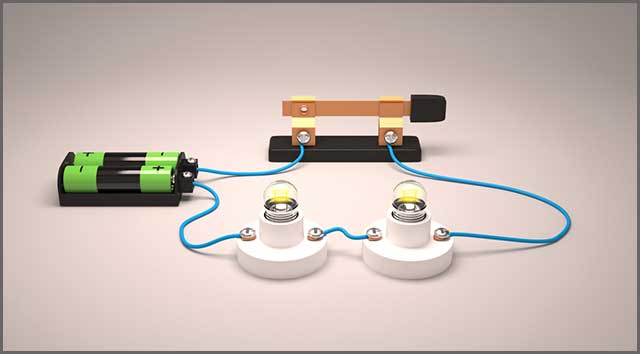
Another way to classify is to observe the current flowing through them.
• Direct Current –. In a direct current course, electricity only flows in one direction. Smaller devices generally require DC electricity. A device that comes with a large box as part of its power cord converts AC into DC.
• Alternating Current – In alternating current, the electricity flows both ways and switches periodically. AC electricity is easy to produce, and it can cover long distances without much energy loss. The wall sockets provide AC.
Conclusion
Electronic components are the basis of any electronic circuit. They help in transferring the current through the course and make it work. Electronic components are of several types and can be active and passive. The main ingredients include resistors, transistors, inductors, diodes, and capacitors. A combination of all the electronic components is an integrated circuit. An integrated circuit comes handy in producing electronics like watches and cellphones.
If you wish to learn more about electronic components, we can help you out. We also produce a variety of electronic components. We can guide you through their manufacturing process. Contact us for any information that you may need on the working of electronic components.
